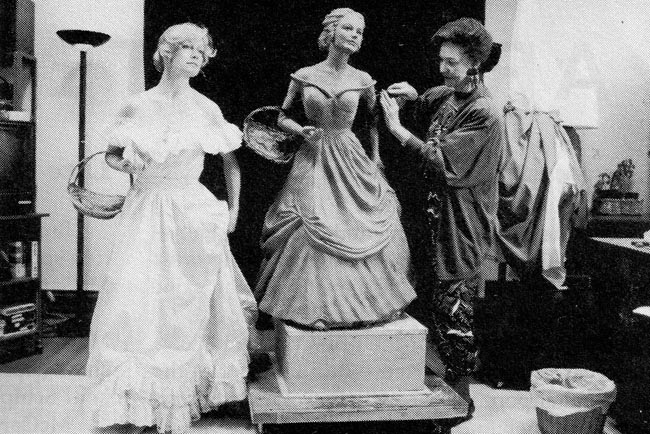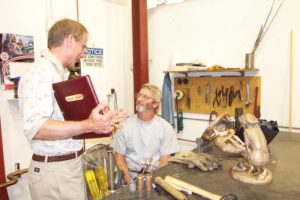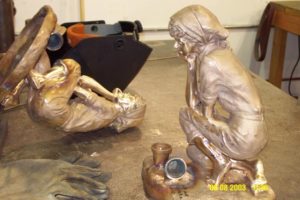 A number of fairly complex steps are involved in making a bronze sculpture. It all begins with a concept in the mind of the artist. In the case of a human figure, who (or what type of person) will the subject be? What kind of setting will the sculpture have? What is the concept the artist wants to impart to the viewer?
A number of fairly complex steps are involved in making a bronze sculpture. It all begins with a concept in the mind of the artist. In the case of a human figure, who (or what type of person) will the subject be? What kind of setting will the sculpture have? What is the concept the artist wants to impart to the viewer?
Using one or more live models, the artist then takes many photos from every conceivable angle. The model will wear clothing to fit with the artist’s concept of how the finished sculpture should look. In addition to the photographs, the artist takes a large number of measurements from the model. It is important to get every proportion exactly right.
Next, working from all this information, the artist creates a sculpture of clay or other material. Even for life-size sculptures, the first model is small — a test case. This model is called a “moquette”.
In the case of a life size (or near-life size sculpture) the artist now requires the assistance of skilled artisans. One to build the armature (the internal structure on which the large clay model will be built), and one to assist in exactly translating all the proportions of the moquette into the large form. A clay model the size of the finished piece is now made.
Once completed, the artist works on the large clay model to adjust and refine every detail. The live model may be brought back to the studio at this point.

Charles Hess, Jr. on a visit to Art Castings in Loveland, Colorado, where several editions of ‘Garden Girl’ were in final stages of completion.
When the clay model is complete, the piece goes to the foundry where a number of skilled artisans begin the process of creating a bronze sculpture from the clay model, using a process called the “lost wax method.”
Jo Hess personally transported her works to the foundries in Loveland, Colorado where they were cast in bronze. For each piece she made several trips to the foundry to supervise the various steps in the making of each sculpture.
The final application of all patinas was done only after the bronze sculptures had been skillfully crafted to the artist’s exacting requirements. These supervisory visits insured the integrity of her work and of all the important patina finishes.
The 6-minute video below shows the steps involved in creating the finished bronze.

